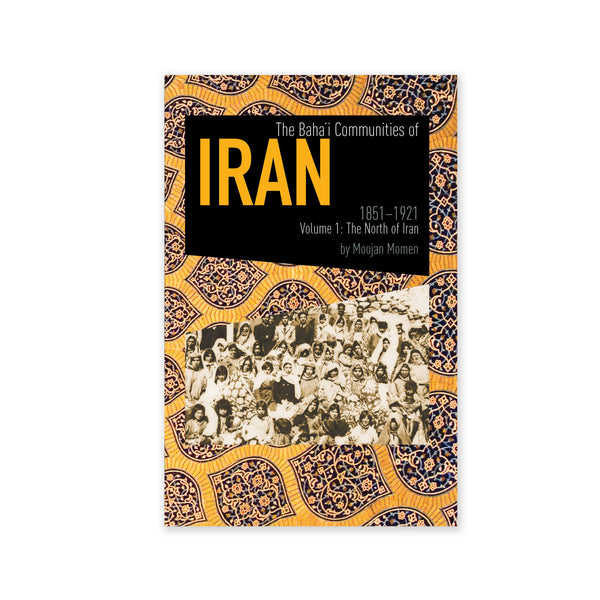Baha'i Communities of Iran 1851 to 1912, Vol. 1: The North of Iran
|
This title is currently not available within the US. We are working to restock. Apologies for any inconvenience. It is available worldwide to all countries outside the US. |
| Link to Amazon.com Kindle version |
| Look inside the book |
Dr Moojan Momen provides a panoramic yet detailed account of the largest and the smallest Baha'i communities during the period 1851 to 1921. During this time they acquired characteristics that differentiated them from the rest of the population their ethos and outlook, their system of administration and social institutions and the persecution they faced as a result.
The study of the religious minorities in Iran is still at an early stage. In particular, the Baha'i community has received relatively little attention, despite being the largest non-Muslim minority in Iran. Moojan Momen sets out to remedy this situation. Using a narrative style, he presents an account of the Baha'i communities in the northern half of Iran, province by province, during the early years of their formation and development. The starting point is the execution of the Báb in 1850 and the holocaust of 1852 when the shah gave orders for the extermination of the Babi community and thousands of Babis were killed. Set against the background of the turmoil in the social and economic conditions in Iran, the book stretches across the period of the leadership of the Baha'i community by Baha'u'llah and Abdu'l-Baha.
The book traces the developments in the Iranian Baha'i community as it emerged from the Babi community and, under the guidance of Baha'u'llah and Abdu'l-Baha, became less parochial and more global in its outlook, seeking education and raising the position of women in its local communities. By the period of the leadership of Abdu'l-Baha, these communities were making a notable difference, with the establishment of modern schools, the promotion of the education and social role of women, the development of health facilities and the building of modern public baths. In all these areas the Baha'is were at the forefront of modernity and development in Iran. However, each upsurge in the activities of the Baha I community resulted in an upsurge of persecution.
This book is an important contribution to the knowledge of the early days of the Baha'i Faith, the development of the largest non-Muslim minority in Iran and the emergence of modernity in the Middle East.
About the Author
Dr Moojan Momen was born in Iran but was raised and educated in England, attending the University of Cambridge. He has a special interest in the study of Shi‘i Islam and the Baha’i Faith, both from the viewpoint of their history and their doctrines. In recent years, his interests have extended to the study of the phenomenon of religion. His principal publications in these fields include: The Babi and Baha’i Religions, 1844–1944: Some Contemporary Western Accounts (George Ronald, 1981); Introduction to Shi‘i Islam (George Ronald and Yale University Press, 1985); and The Phenomenon of Religion (OneWorld, Oxford, 1999, republished as Understanding Religion, 2008). He has contributed articles to encyclopaedias such as Encyclopaedia Iranica and The Oxford Encyclopedia of the Modern Islamic World as well as papers to academic journals such as International Journal of Middle East Studies, Past and Present, Religion, Baha’i Studies Review, and Iranian Studies. He is a Fellow of the Royal Asiatic Society.
Hard Cover
Pages: 592
Dimensions: 234 x 156 mm (9.75 x 6.25 ins)
Weight: 1121 g
ISBN: 978-0-85398-585-3






